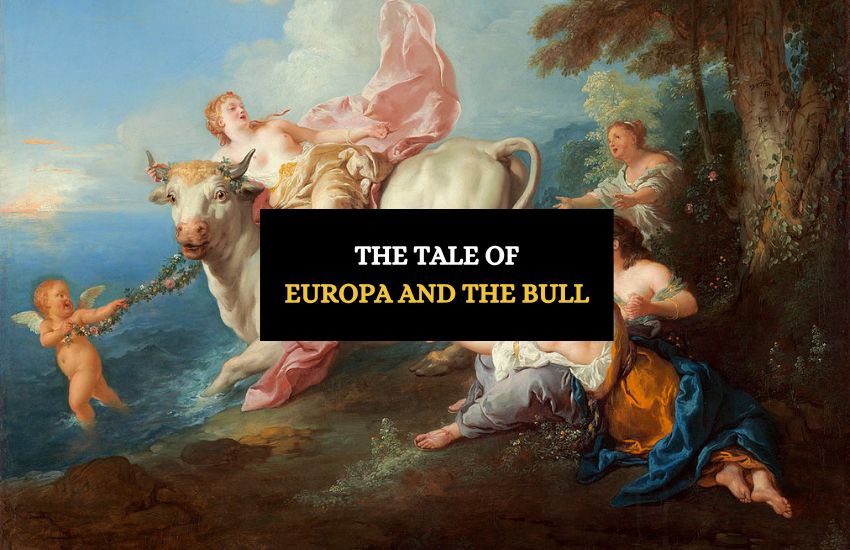
Table of Contents
For centuries, artists have been captivated by the myth of Europa and the bull, a tale that has inspired countless works of art, literature, and music. This myth tells the story of Europa, a Phoenician princess who was abducted by Zeus in the form of a bull and taken to the island of Crete.
While the story may seem like a simple love story at first glance, it holds a deeper meaning and has been interpreted in many different ways throughout history.
In this article, we’ll delve into the myth of Europa and the bull, exploring its significance and enduring legacy in art and culture.
Europa Meets the Bull
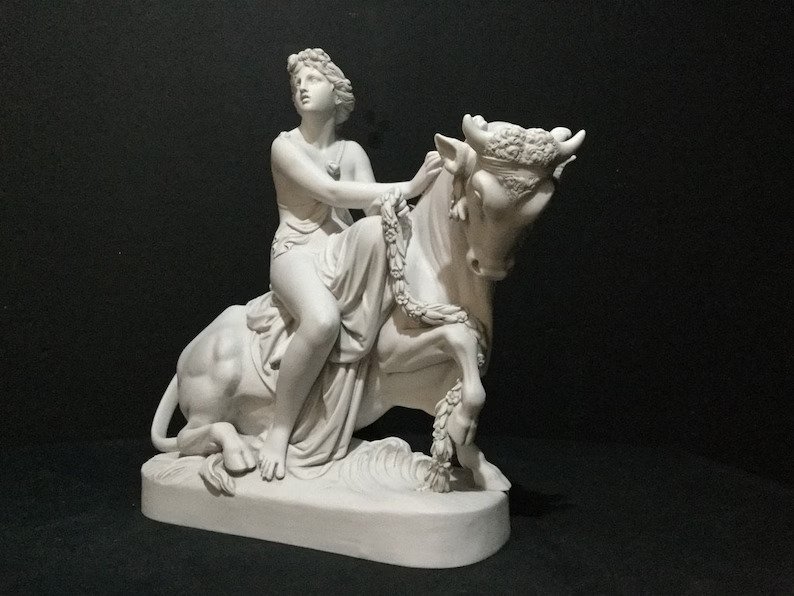
In ancient Greek mythology, Europa was a beautiful Phoenician princess. She was known for her extraordinary beauty and grace, and many men sought her hand in marriage. However, none of them could win her heart, and she remained unmarried.
One day, while Europa was gathering flowers in a meadow, she saw a magnificent bull in the distance. It was the most beautiful and powerful animal she had ever seen, with shining white fur and golden horns. Europa was captivated by the bull’s beauty and decided to approach it.
As she came closer, the bull began to act strangely, but Europa wasn’t afraid. She reached out to touch the bull’s head, and suddenly it lowered its horns and charged at her. Europa screamed and tried to run away, but the bull was too fast. It caught her in its horns and carried her off across the sea.
The Abduction of Europa
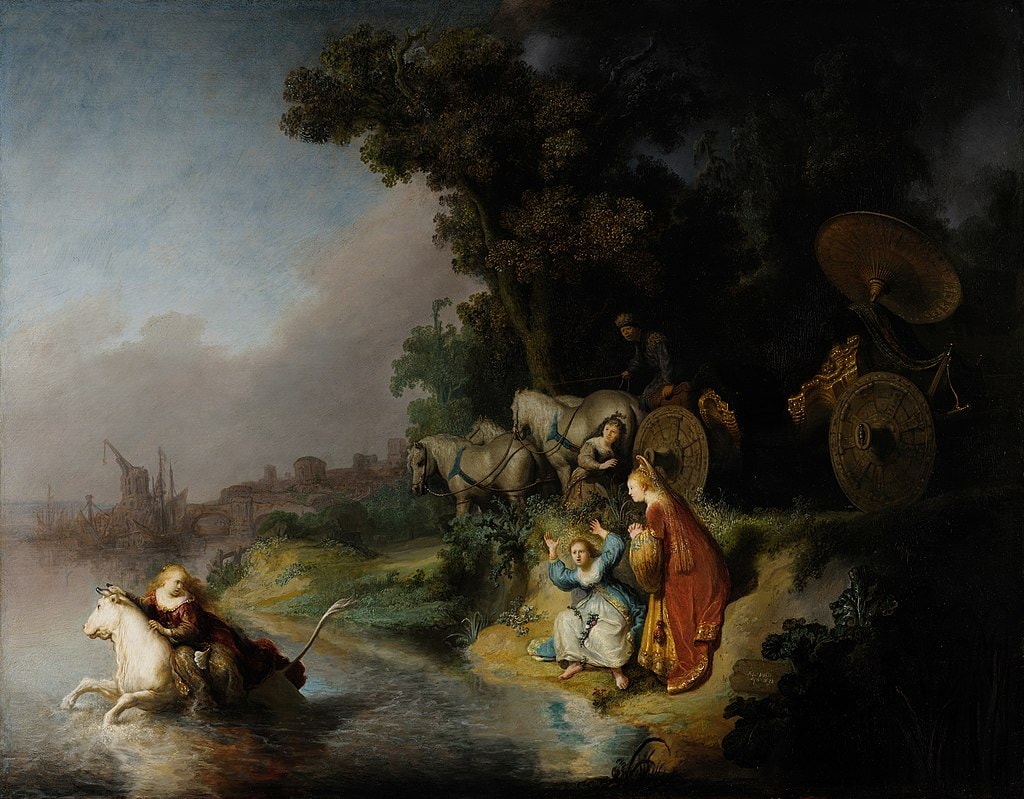
Europa was terrified as the bull carried her across the sea. She had no idea where she was going or what the bull intended to do with her. She cried out for help, but no one heard her.
The bull swam across the sea, heading towards the island of Crete. When they arrived, the bull transformed into a handsome young man, who revealed himself to be none other than Zeus, king of the gods.
Zeus had fallen in love with Europa and decided to abduct her. He knew that if he revealed his true form to her, she would be too afraid to go with him. So, he disguised himself as a bull to trick her.
Europa in Crete
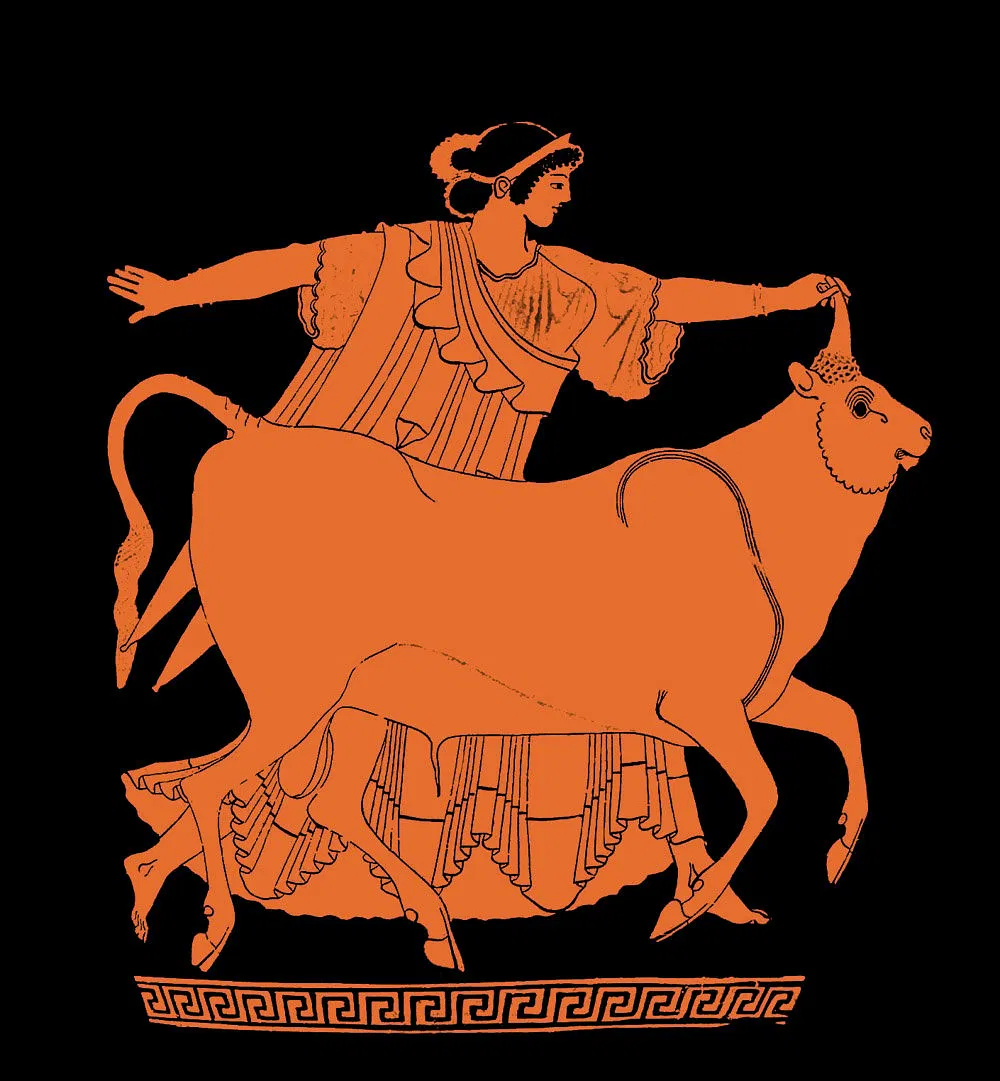
Once in Crete, Zeus revealed his true identity to Europa and declared his love for her. Europa was at first frightened and confused, but soon she found herself falling in love with Zeus.
Zeus gave Europa many gifts, including beautiful jewelry and clothing. He also made her the queen of Crete and promised to love and protect her always.
Europa lived happily with Zeus for many years, and they had several children together. She was beloved by the people of Crete, who saw her as a wise and kind queen.
The Legacy of Europa
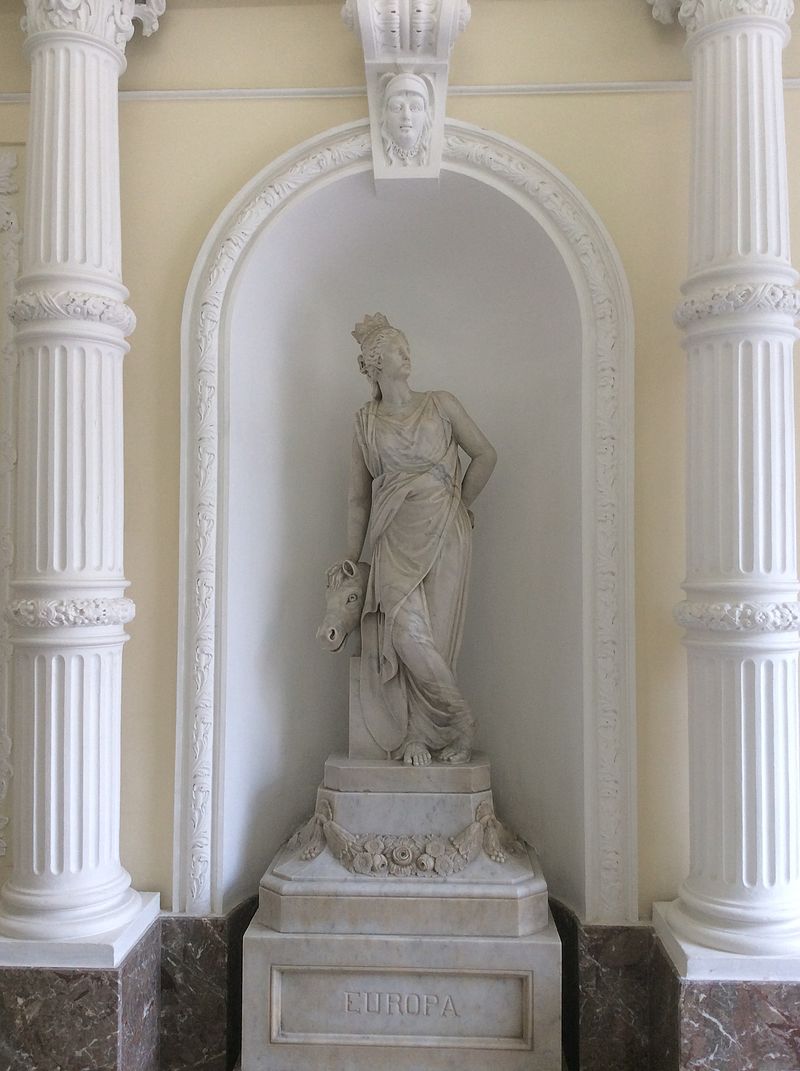
Europa’s legacy lived on long after she died. She was remembered as a brave and beautiful woman who had been chosen by the king of the gods to be his queen.
In honor of Europa, Zeus created a new constellation in the sky, which he named after her. It’s said that the constellation of Europa can still be seen in the night sky today, a reminder of the beautiful princess who was carried off by a bull and became the queen of Crete.
Alternate Versions of the Myth
The myth of Europa and the Bull is one of those stories that has taken on a life of its own, inspiring a multitude of different versions and interpretations throughout history.
1. In Hesiod’s Theogony
One of the earliest and most well-known versions of the myth comes from the Greek poet Hesiod, who wrote about Europa in his epic poem “Theogony” around the 8th century BC.
In his version, Zeus, king of the gods, falls in love with Europa and transforms himself into a bull to seduce her. He carries her off to the island of Crete, where she becomes the mother of three of his children.
2. In Ovid’s Metamorphoses
Another ancient version of the myth comes from the Roman poet Ovid, who wrote about Europa in his famous work “Metamorphoses” in the 1st century AD. In Ovid’s version, Europa is out gathering flowers when she sees the bull and is immediately drawn to its beauty. She climbs onto its back, only to be carried off across the sea to the island of Crete.
3. Europa as a Mermaid
In the myth of Europa as a mermaid, Europa is not a human princess but a beautiful mermaid who is captured by a fisherman. The fisherman keeps her in a small tank and displays her to the townspeople as a curiosity. One day, a young prince from a nearby kingdom sees Europa in her tank and is struck by her beauty.
He falls in love with her and manages to free her from the tank. Europa and the prince then embark on a journey together, navigating treacherous waters and battling fierce sea creatures along the way. In the end, they arrive safely on the shores of a distant land, where they live happily ever after.
4. Europa and the Pirates
In another more modern version from the Renaissance, Europa is not a princess but a beautiful and wealthy noblewoman. She is kidnapped by pirates and sold into slavery but is eventually rescued by a handsome prince who falls in love with her. Together, they embark on a perilous journey across the sea, facing numerous challenges and obstacles along the way.
In some versions of the story, Europa is portrayed as a brave and resourceful heroine who helps the prince navigate the dangers they encounter. Eventually, they arrive at their destination and live happily ever after, with Europa becoming a beloved queen and the prince her devoted king.
5. A Dreamlike Version
One of the more recent and interesting versions of the myth comes from the Spanish surrealist artist Salvador Dali, who painted a series of works depicting Europa and the bull in the 1930s. In his series of paintings, Dali depicts the bull as a monstrous, rocky creature with distorted features, while Europa is shown as a ghostly figure floating above him.
The paintings are characterized by dreamlike imagery and symbolism, such as melting clocks and distorted landscapes, that evoke the subconscious mind. Dali’s interpretation of the myth is an example of his fascination with the human psyche and his desire to explore the depths of the unconscious through his art.
Symbolism of the Story
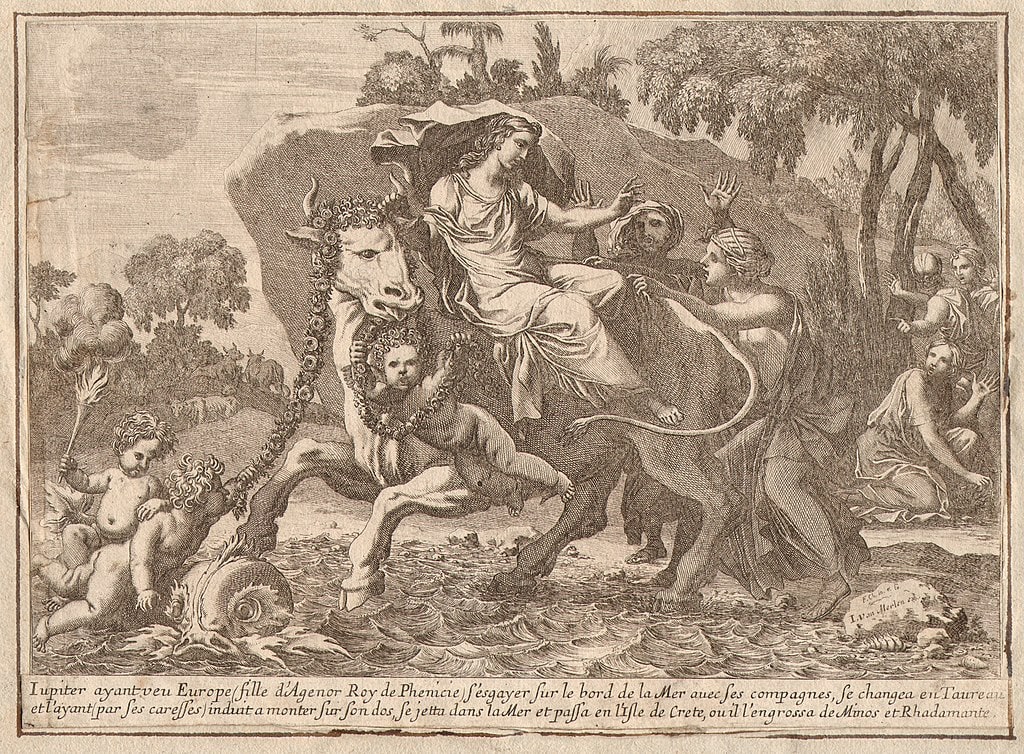
The myth of Europa and the Bull is one that has been told for centuries and has inspired countless interpretations. However, at its core, the story offers a timeless moral that is just as relevant today as it was when the myth was first conceived: Be careful of the unknown.
Europa, like many of us, was drawn in by the unknown and the excitement of something new and different. However, she soon discovered that this desire could lead to danger and uncertainty. The bull, with all its power and mystery, represented the unknown, and Europa’s journey with it showed the dangers that come with exploring the unfamiliar.
The story also highlights the role of women in ancient Greece, and the abuse of power, and domination and strength of men.
The Legacy of the Myth
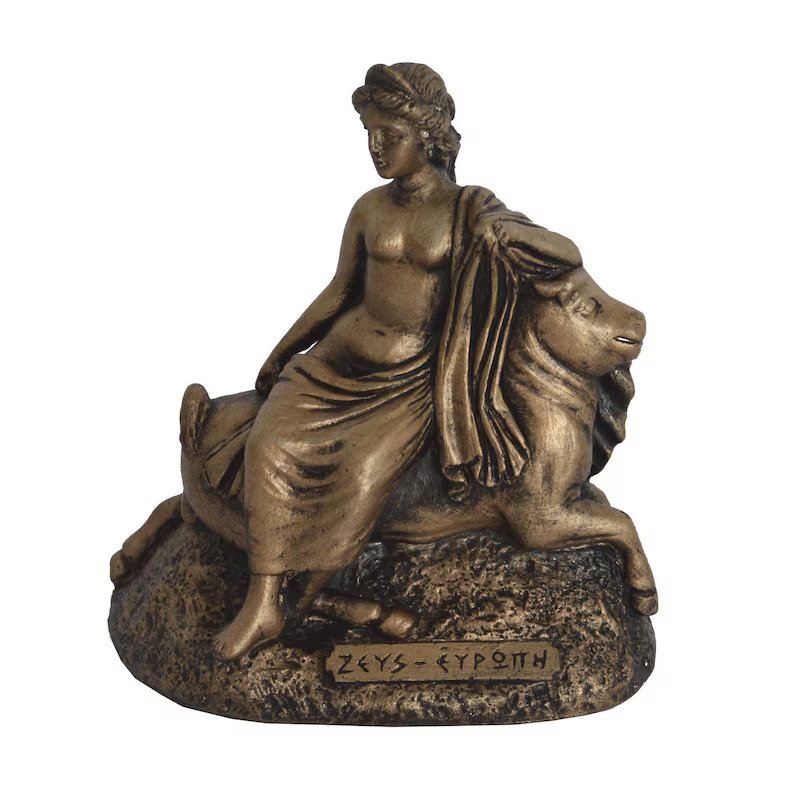
The story of Europa and the Bull has inspired countless works of art, literature, and music. Artists throughout history have depicted the myth in paintings, sculptures, and other visual works, such as “The Rape of Europa” by Titian and Salvador Dali’s surrealist interpretations.
The story has also been retold and reimagined in literature, with authors such as Shakespeare and James Joyce referencing the myth in their works. In music, pieces such as the ballet “Europa and the Bull” by Ede Poldini and the symphonic poem “Europa” by Carl Nielsen draw from the story.
The enduring influence of Europa and the Bull is a testament to the power of myth to captivate and inspire generation after generation.
Wrapping Up
The story of Europa and the Bull has captivated and inspired people for centuries, and its enduring influence on art, literature, and music is a testament to its power. The myth’s themes of desire, danger, and the unknown continue to resonate with people today, reminding us of the universal human experiences that have transcended time and culture.
Whether viewed as a cautionary tale or a celebration of adventure, the story of Europa and the Bull remains a timeless classic that continues to inspire and fascinate generation after generation.








